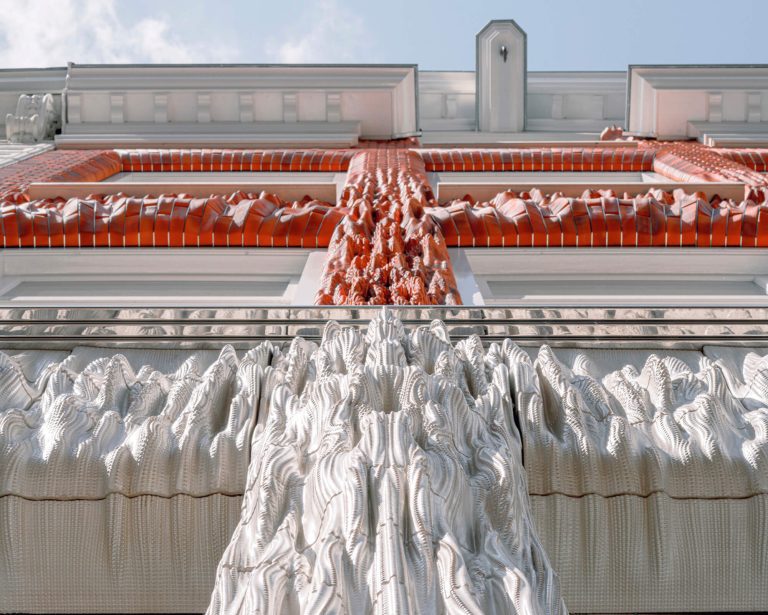Amsterdam’s P.C. Hoofstraat is known for its many high-end boutiques and restaurants. Over the past decade, some of the most innovative architectural firms, such as MVRDV and Studio Job, have brought striking examples of contemporary design to the streets of this neighborhood. One of the most recent notable additions is the facade of the Ceramic House, built by Rotterdam-based studio RAP.
Inspired by the city’s historic architecture and the Rijksmuseum‘s world-famous collection of ceramics, the architectural team designed a new facade rich in detail and ornamentation. Having explored the realm of 3D-printed ceramics in a previous project, Studio RAP extended this venture. The technology was inspired by the design intricacies found in high-performance knitwear. By translating the intricate layers of textiles — graceful folds, interwoven threads and stitching patterns — into ceramic tiles and bricks with a rippled surface, the team created a façade that blends seamlessly into the historic backdrop while standing out from neighboring structures.
Using its proprietary large-scale 3D printing technology, Studio RAP applied an algorithmic design approach to achieve optimal detail on some 3,000 ceramic tiles. Carefully considering the scale, size, type, color, and ornamentation of the neighboring architecture, the resulting variations – a pearl-white glazed tile and an elongated undulating brick-like tile in three shades of red – give the Ceramic House a distinctive look and texture.
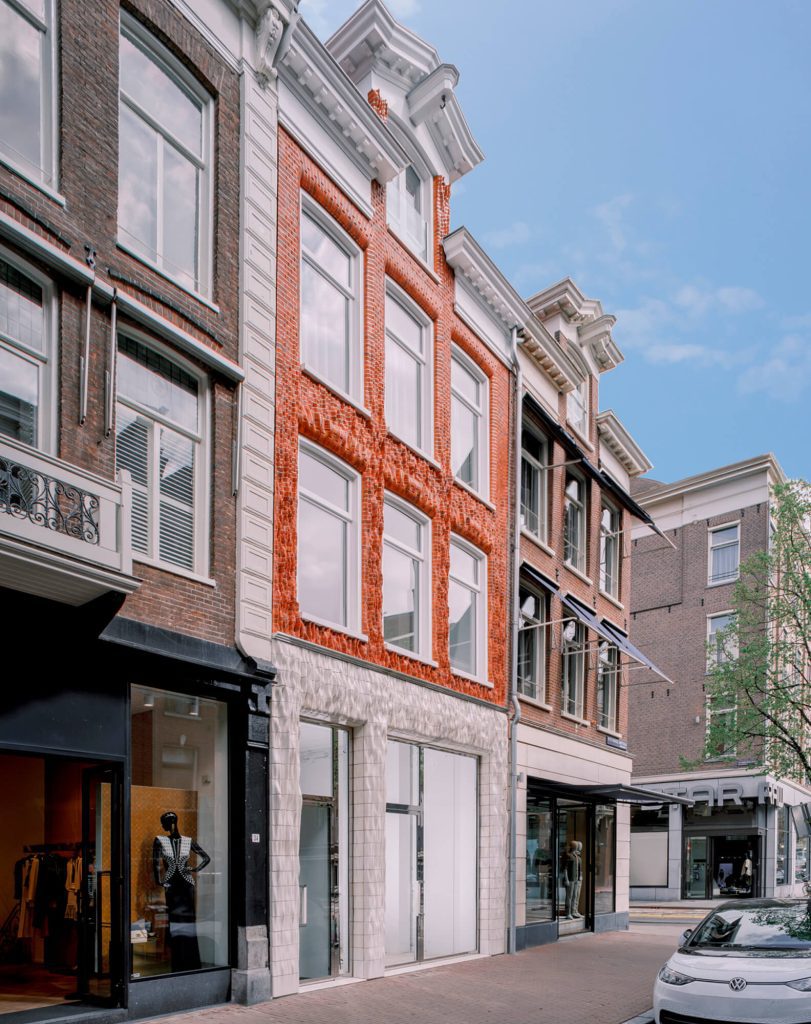
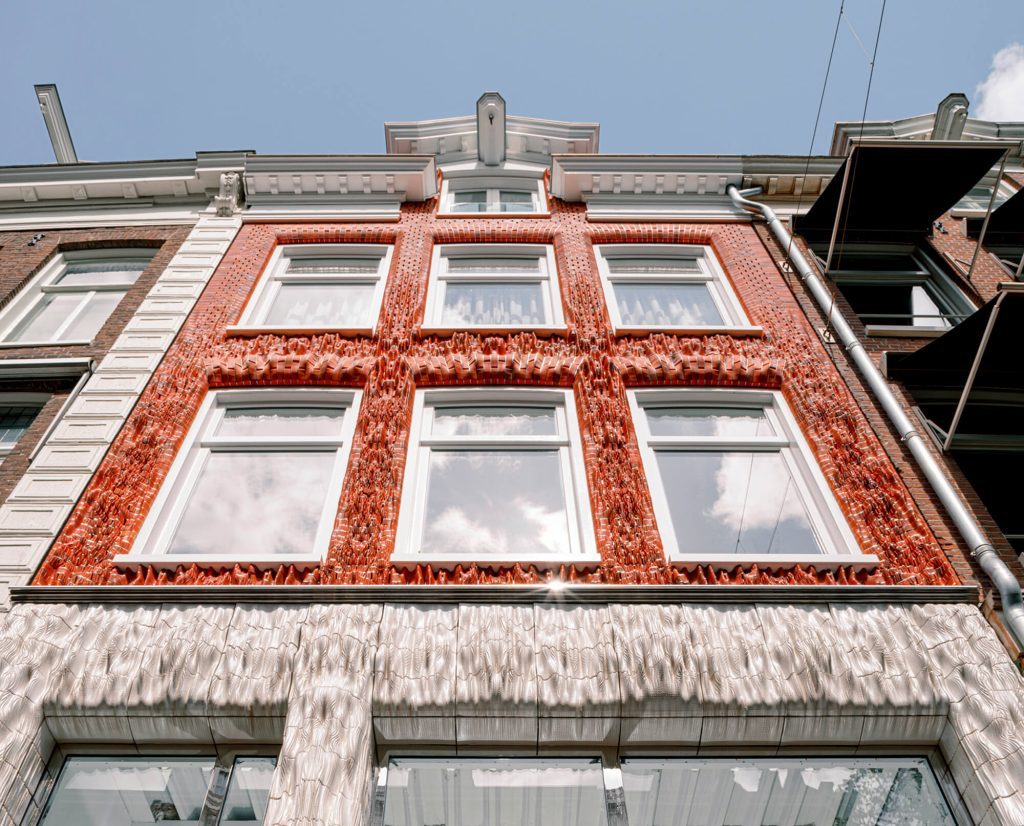
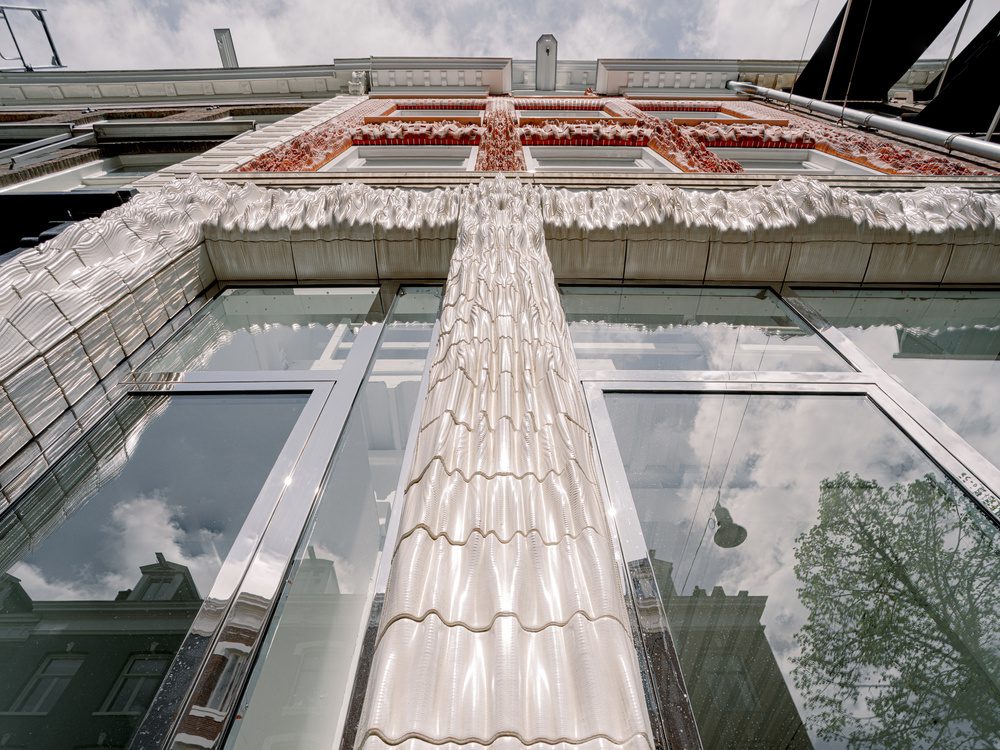
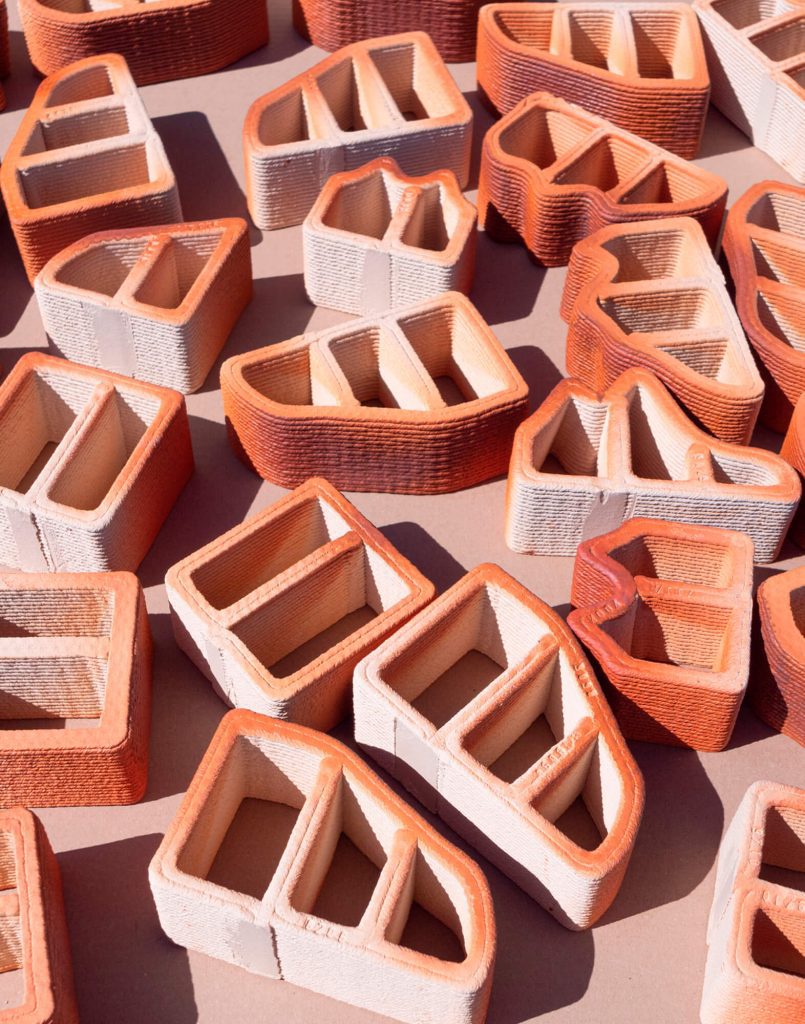
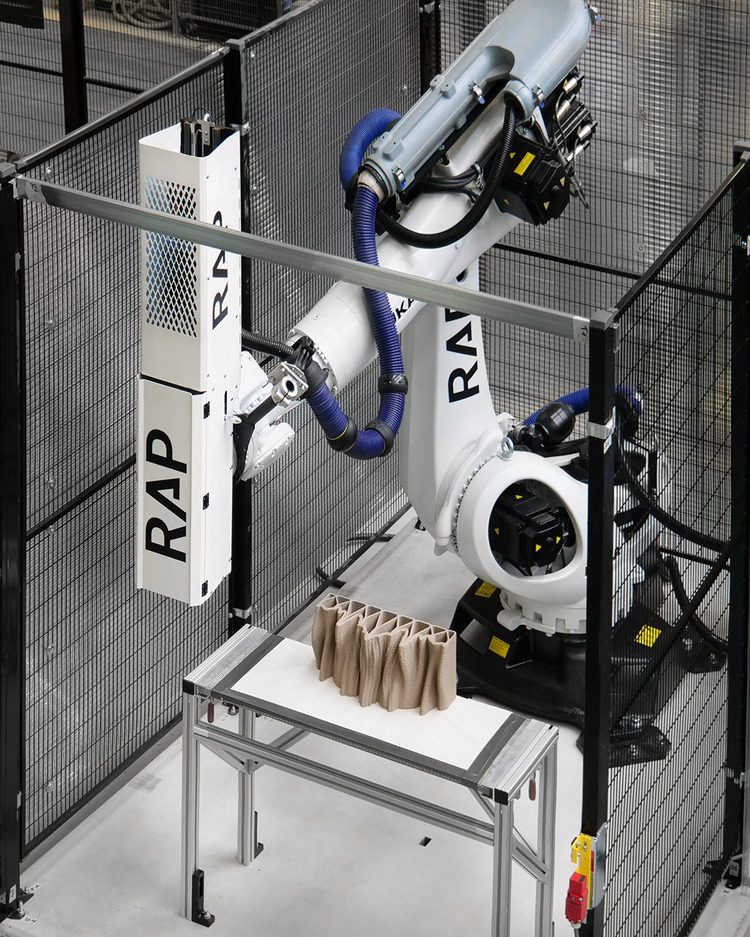
All photography by RICCARDO DE VECCHI. Courtesy of STUDIO RAP
